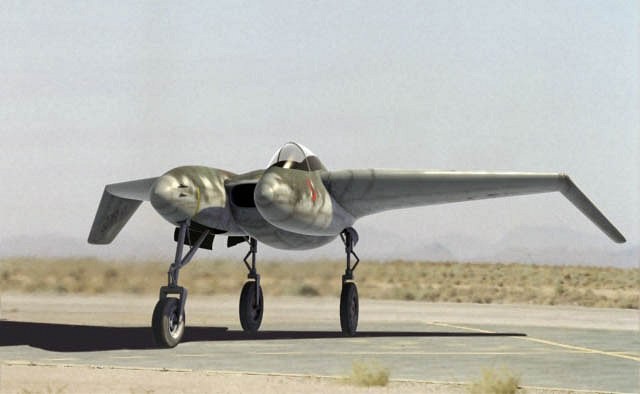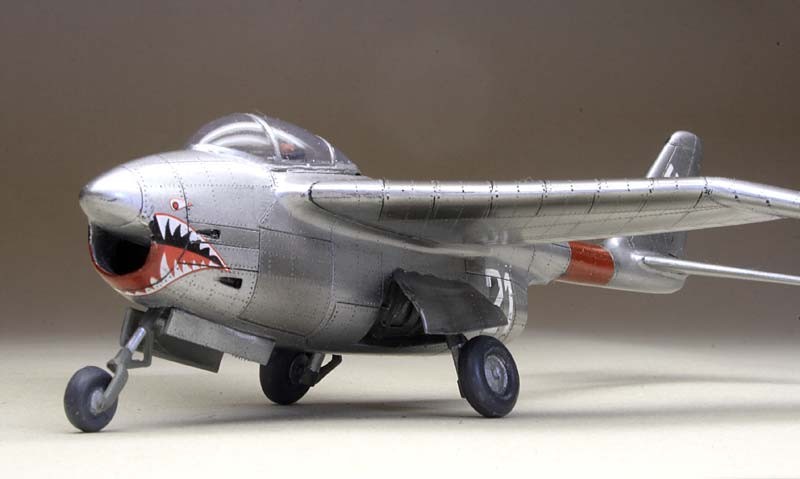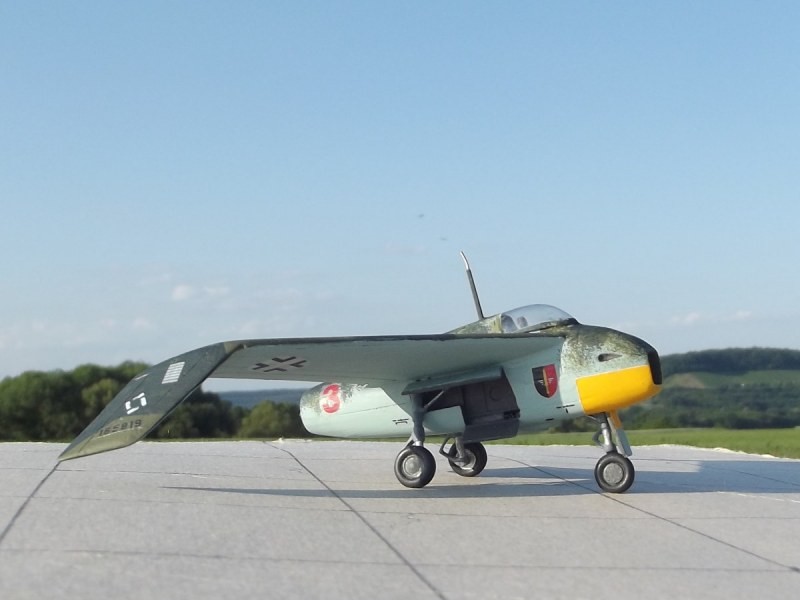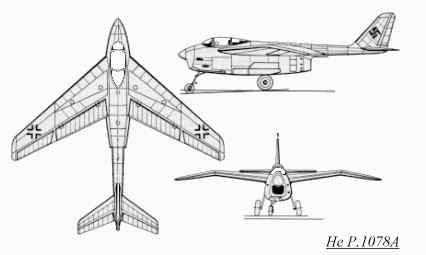| Type |
A Single seat fighter |
B Single seat fighter |
C Single seat fighter |
| Engine |
1 HeS 011 |
1 HeS 011 |
1 HeS 011 |
| Dimensions |
Length 9,48 m, height , span 8,8 m , wing area , |
Length 6,04 m, height , span 9,43 m , wing area |
Length 6,1 m, height 2,35 , span 9,0 m , wing area 17,8 m2 |
| Weights |
Empty , loaded , max. take off weight |
|
Empty 2454 kg, loaded 3920 kg, max. take off weight fuel 1450 l |
| Performance |
Max.. speed 960 km/h, cruising speed , range , endurance , service ceiling , climb |
Max.. speed 1025 km/h, cruising speed , range , endurance , service ceiling , climb |
Max.. speed 1025 km/h at sea level, 770 km/h at 10000 m cruising speed , range , endurance , service ceiling , climb 29,8 m/sec. |
| Armament |
2 30 mm MK 108 |
Heinkel produced three different designs of the P.1078 for the OKL Emergency Fighter competition in 1944. The Heinkel He P.1078A was a single-seat fighter armed with two MK 108 30mm cannon in the nose. The shoulder-mounted gull wing was swept back at 40 degrees, and was powered by one HeS 011 jet engine located beneath the cockpit and exhausting under a central tailboom
his second design of the He P.1078 was a tailess, single-seat fighter that had a somewhat unusual cockpit arrangement. The cockpit was located in a gondola on the port side, and another gondola containing two MK 108 30mm cannon and radar was located on the starboard side. An air intake feeding the single HeS 011 turbojet was located between the two gondolas. Like the He P.1078A, the gull wings were swept back at 40 degrees.
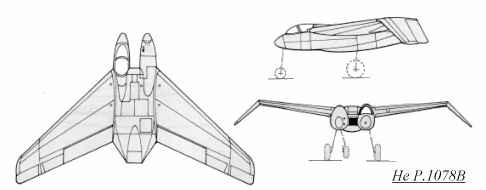
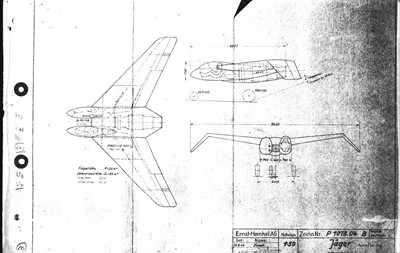
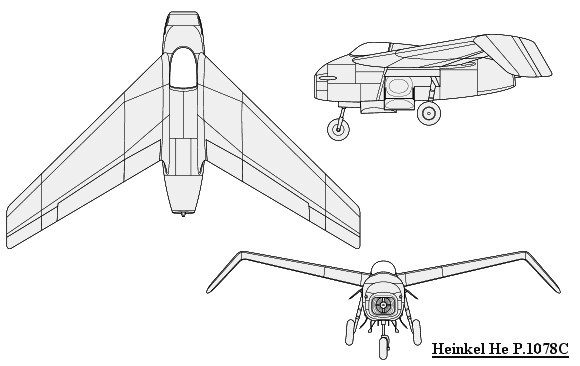
This design was submitted to the Jägernotprogram (Emergency Fighter Program) at the end of 1944. The Messerschmitt Me 262 twin jet fighter was beginning to enter combat, but a second generation of jet fighters were wanted, one that would take advantage of the (soon to be produced) Heinkel Hirth He S 011 turbojet engine. Specifications were issued by the OKL (Luftwaffe High Command), and Heinkel entered their He P.1078C fighter design in the competition for a development or production contract.
The Heinkel He P.1078C had a short, squat fuselage (all metal construction), which contained the single He S 011 jet engine. This engine was fed by a squarish air intake in the fuselage nose, which then led to the engine via a flattened air duct. The wings were constructed of wood (to save weight and resources) and contained the entire fuel supply of 1450 liters and were unprotected. Featuring a large dihedral, the P.1078C's wings were swept back at 40 degrees and its wing tips were angled downwards. The downward turned wing tips were chosen because it was felt that they would have less influence on the critical Mach number of the wing and have better roll damping than vertical fins. The main landing gear retracted forwards into the fuselage sides, and the nose gear retracted to the rear and rotated 90 degrees in order to lay flat beneath the air duct. A single Heinkel Hirth He S 011 turbojet was mounted in the fuselage rear, and provided 1300 kg (2866 lbs) of thrust. Planned armament at this time consisted of two MK 108 30mm cannon with 100 rounds for each gun, placed on each side of the fuselage below the cockpit.
After all aircraft designs were submitted for the Jägernotprogram (Emergency Fighter Program), some criticism was made of the Heinkel He P.1078C design, mainly concern was expressed about the unprotected fuel tanks in the wings and the short fuselage shape, which in their opinion made it ill-suited for high speeds. Misgivings were also expressed about the wing shape. Heinkel dropped all work on the P.1078C after the February 27-28, 1945 meeting. A decision was made to concentrate more on the Fw Ta 183, Ju EF128, Me P.1110 and Bv P.212 designs.
